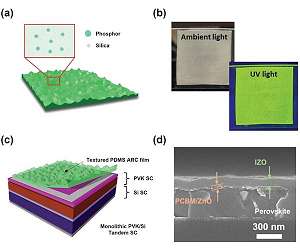Recently, Junyou Yang and Yubo Luo from the Huazhong University of Science and Technology, in collaboration with Xin Li from the National University of Singapore, published an article titled “Enhancing the stability of planar perovskite solar cells by green and inexpensive cellulose acetate butyrate” in Journal of Energy Chemistry.
Hybrid organic-inorganic halide perovskite materials are receiving considerable attention owing to their high optical absorption coefficient, tunable bandgap, long carrier diffusion path, and solution processability, which enable low-cost mass production. In the recent decade, single-junction perovskite solar cells (PSCs) have achieved a state-of-the-art power conversion efficiency (PCE) of 25.7% using regular (n-i-p) structures.
However, the stability of PSCs still does not meet commercial standards. The light-absorbing layer of PSCs is susceptible to irreversible degradation because of environmental conditions such as the humidity, oxygen content, ultraviolet (UV) illumination, electric field, and heat.
The perovskite film primarily degrades due to the numerous defects therein, leading to nonradiative recombination in the device, and consequently, inferior device performance. Therefore, developing a high-quality perovskite with fewer defects that can facilitate carrier transportation at the interface between the perovskite and charge transport layer is of immense significance to enhance the efficiency and device stability.
A green and low-cost organic additive, cellulose acetate butyrate (CAB), was used to synthesize a high-quality perovskite thin film. The optimized perovskite film with significantly improved crystallinity demonstrated a nearly ten-fold-longer carrier lifetime than the pristine film.
Furthermore, the energy level and stability of the optimized perovskite films were improved, leading to the fabrication of an optimized CAB-based device with a champion efficiency of 21.5% compared to the control device (18.2%). In addition, the optimized device could maintain an initial efficiency of more than 90% after aging for 3300 h at a relative humidity of 35%.
Research Report:Enhancing the stability of planar perovskite solar cells by green and inexpensive cellulose acetate butyrate
Related Links
Dalian Institute of Chemical Physics, Chinese Academy Sciences
All About Solar Energy at SolarDaily.com
|
We need your help. The SpaceDaily news network continues to grow but revenues have never been harder to maintain. With the rise of Ad Blockers, and Facebook – our traditional revenue sources via quality network advertising continues to decline. And unlike so many other news sites, we don’t have a paywall – with those annoying usernames and passwords. Our news coverage takes time and effort to publish 365 days a year. If you find our news sites informative and useful then please consider becoming a regular supporter or for now make a one off contribution. |
||
|
SpaceDaily Contributor $5 Billed Once credit card or paypal |
SpaceDaily Monthly Supporter $5 Billed Monthly paypal only |
|

![]()
New study finds ways to improve light absorption in perovskite silicon tandem solar cells
Ulsan, South Korea (SPX) Oct 24, 2022
A research team, affiliated with UNIST has succeeded in achieving a power conversion efficiency (PEC) of 23.50% in a perovskite-silicon tandem solar cell built with a special textured anti-reflective coating (ARC) polymeric film. According to the research team, the PCE of the device with the ARC film was sustained for 120 hours, maintaining 91% of its initial value.
This breakthrough has been led by Professor Kyoung Jin Choi and his research team in the Department of Materials Science and Engineer … read more
